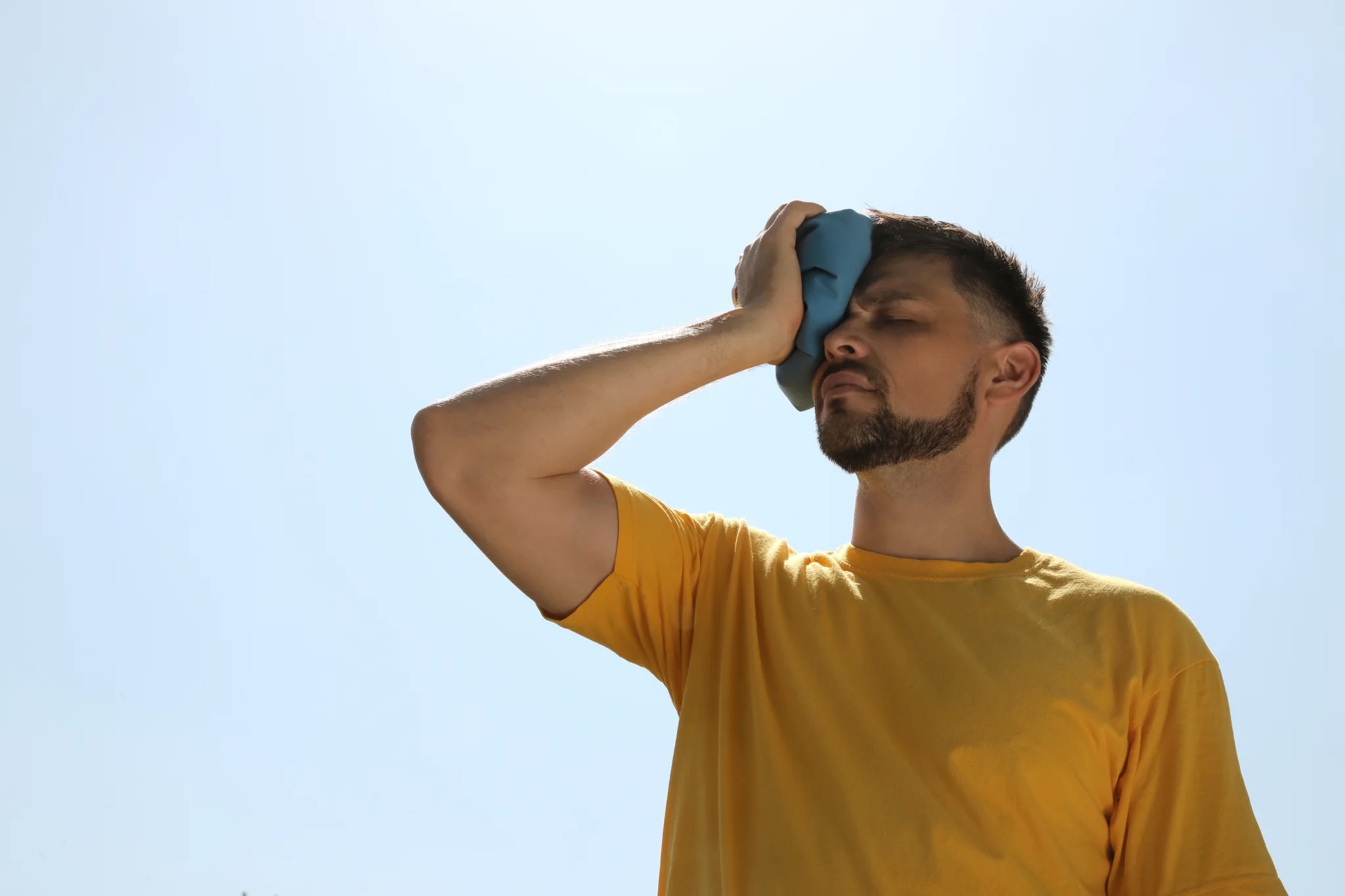Summer comes early in Texas, and with it comes sweltering temperatures, high humidity, and lots of sunshine. Undoubtedly each summer, Texans suffer from preventable heat strokes and heat exhaustion. Understanding the symptoms and signs of heat stroke can protect you and loved ones from the adverse effects of a heat stroke.
The Difference Between Heat Stroke and Heat Exhaustion
Heat exhaustion is extremely common in Central Texas. But it doesn’t always call for a trip to the ER. Heat exhaustion can usually be resolved with at home remedies. However, heat stroke is always a medical emergency and it’s important to seek an emergency room immediately if you suspect you or someone you know is experiencing a heat stroke.
Heat exhaustion typically occurs when your body has lost a significant amount of water and salt. This usually occurs from sweating. Heat stroke occurs when your body can no longer control its internal temperature, causing a slew of problems from rapid heart rate to organ damage.
Let’s take a look at the symptoms of heat stroke and heat exhaustion.
Symptoms of Heat Exhaustion Include:
- Increased sweating and weakness
- Lightheadedness, dizziness, or feeling as if you’re going to faint
- Weak heart rate
- Pale, cold, and clammy skin
If you’re experiencing the symptoms of heat exhaustion, move to a shaded area or away from the heat entirely. Add a cool compress to your body or take a cold shower.
Symptoms of Heat Stroke Include
- Temperature above 104 degrees Fahrenheit
- Rapid heart rate
- Change in consciousness
- Changes in skin, such as hot, red, or dry skin.
If you’re experiencing the symptoms of heat stroke, seek urgent medical attention. Knowing when to head to the ER can help save lives during the excessive heat we experience every summer.
How To Prevent Heat Strokes
Escaping the heat may be impossible during the hottest months of the summer, but being prepared and preventing heat stroke is possible with relatively easy solutions.
- Hydrate. Hydration is crucial to preventing heat exhaustion and heat stroke. If you’re performing any activities outside or in the heat, be sure to have at least two full glasses of water every hour.
- Avoid outdoor activities during the hottest times of the day. In Texas, 3:00 – 5:00 pm is considered the hottest time of day. Avoid any strenuous outdoor activities during this time.
- Wear lightweight, loose-fitting clothing. This will help you stay cool when exposed to extreme heat.
- Never leave anyone or yourself in a parked car. This is ground-zero for heat stroke. Never leave anyone in a car, even if it’s for a short period of time.
- Be aware of medications that can impact your hydration. Certain medications can lead to dehydration, be aware of the side effects of your current medications.
- Take necessary precautions and avoid the heat when possible if you’re at an elevated risk for heat stroke.
Common Risk Factors for Heat Stroke
Some are more prone to experiencing the effects of heat exhaustion and heat stroke than others. Factors like your age, the current heat index, and certain medications can increase your risk of heat stroke.
Certain risk factors can include
- Age. Both the young and the elderly people are more likely to suffer from the effects of heat stroke. This is because of the nervous system. When we’re younger, we haven’t fully developed one that can efficiently regulate our temperature. When we’re above 65 the central nervous system can show signs of deterioration
- Heat index. High heat indexes make it harder for you to cool down. This is due to an increase in humidity and high temperatures.
- Certain pre-existing conditions. Conditions like heart and lung disease can make you more susceptible to heat stroke. As well as leading a sedentary life and pregnancy. Check with your doctor to see if you’re at a greater risk for heat stroke.
When To Visit Austin Emergency Center
The symptoms of heat stroke can come on suddenly and be alarming. If you or someone you know is experiencing the signs of heat stroke, then seek immediate 24-hour emergency care at your closest ER.
Unlike heat exhaustion, heat stroke treatment can only be performed by a medical professional. If you suspect you’re experiencing heat stroke symptoms, take your temperature. Temperatures around or above 104 are a medical emergency.
Treating heat stroke differs from heat exhaustion because you’ll likely need an IV of cool fluids as well as other medical interventions to help your body begin regulating its internal temperature again. Medical professionals will also be able to run diagnostic tests to indicate if any damage has been done to your muscles, kidneys, and other major organs.

